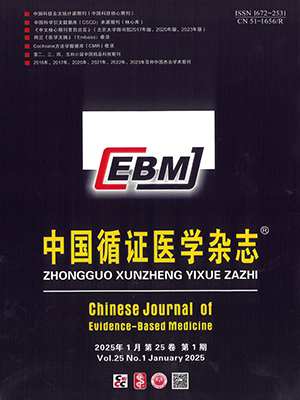| 1. |
徐志红, 陆国平. 高同型半胱氨酸血症与不稳定斑块. 心血管病学进展, 2006, 27(3):289-292.
|
| 2. |
Stampfer MJ, Malinow MR, Willett WC, et al. A prospective study of plasma homocysteine and risk of myocardial infarction in US physicians. JAMA, 1992, 268(7):881-887.
|
| 3. |
Soriente L, Coppola A, Madonn P, et al. Homozygous C677 Tmutation of the 5,10-methyleneterahydrofolate reductase gene and hyperhomocysteinemia in Italian patients with a history of early onset ischemic. Stroke, 1998, 29(4):869-871.
|
| 4. |
Girelli BD, Friso S, Trabetti E, et al. Methylenetetrahydrofolate reductase C677T mutation, plasma homocysteine, and folate in subjects from northern Italy with or without angiographically documented severe coronary atherosclerotic disease:evidence for an important genetic-environmental interaction. Blood, 1998, 91(11):4158-4163.
|
| 5. |
Deloughery TG, Evans A, Sadeghi A, et al. Commomutation in methyleneterahydro folate reducatase Correlation with homocysteine metabolism and late-onset vascuelar disease. Circulation, 1996, 94(12):3074-3078.
|
| 6. |
Den Heijer M, Koster T, Blom HJ, et al. Hyperhomocysteinemia as a risk factor for deep-vein thrombosis. N Engl J Med, 1996, 334(12):759-762.
|
| 7. |
Fallon UB, Virtamo J, Young I, et al. Homocysteine and cerebral infarction in finnish male smokers. Stroke, 2003, 34(6):1359.
|
| 8. |
Linnebank M, Moskau S, Famand S, et al. Homocysteine and carotid intima-media thickness in a German population lack of clinical relevance. Stroke, 2006, 37(11):2840-2842.
|
| 9. |
Sasaki T, Watanabe M, Nagai Y, et al. Association of plasma HCY concentration with atherosderotic carotid plagues and lacunar infaration. Stroke, 2002, 33(6):1493-1496.
|
| 10. |
王文, 王继光, 张宇清. 针对中国高血压的特点制定中国高血压防治的策略与方案. 中华高血压杂志, 2010, 18(10):310-311.
|
| 11. |
Larry B, Goldstein, Cheryl D, et al. Guidelines for the primary prevention of stroke:a guideline for healthcare professionals from the American Heart Association American Stroke Association. Stroke, 2011, 42(2):517-584.
|
| 12. |
Sun Y, Chien KL, Hsu HC, et al. Use of serum homocysteine to predict stroke, coronary heart disease and death in ethnic Chinese 12-year prospective cohort study. Cire J, 2009, 73(8):1423-1430.
|
| 13. |
陈建, 张金枝. 高同型半管氨酸血症:心脑血管疾病的独立危险因子. 心血管病学进展, 2000, 21(2):75-78.
|
| 14. |
Fan Y, Tan HM, Wang H, et al. Hyperhomocysteinemma and atherosclerosis. Acta Physiologica Sinica, 2005, 57(2):103-114.
|
| 15. |
姚涛, 王张锋, 李丽, 等. 血同型半胱氨酸水平与颈动脉斑块的相关性研究. 中华流行病学杂志, 2012, 33(8):846-849.
|
| 16. |
Sun Y, Chien KL, Hsu HC, et al. Use of serum homocysteine to predict stroke, coronary heart disease and death in Ethnic Chinese:a 12-year prospective cohort study. Circ J, 2009, 73(6):1423-1430.
|
| 17. |
王俊早, 俞春娟, 丁奇龙, 等. 血浆同型半胱氨酸及亚甲基四氢叶酸还原酶基因多态性与缺血性脑卒中的相关性研究. 实用临床医药杂志, 2013, 17(3):25-27.
|
| 18. |
Kraus JP, Biochemistry and molecular genetics of cystathionine synthase deficiency. Eur J Pediatr, 1998, 157(12):S50-S53.
|
| 19. |
Boushey CJ, Beresford SAA, Omenn GS, et al. A quantitative assessment of plasmahom ocysteine as a risk for vasculat disease. JAMA, 1995, 274(13):1049-1057.
|
| 20. |
Stamler JS, Osborn JA, Jaraki O, et al. Adverse effects of homocysteine aremodulated by endothelium-derived relaxing factor and related oxides of nitrogen. J Clin Invest, 1993, 91(1):308-318.
|




